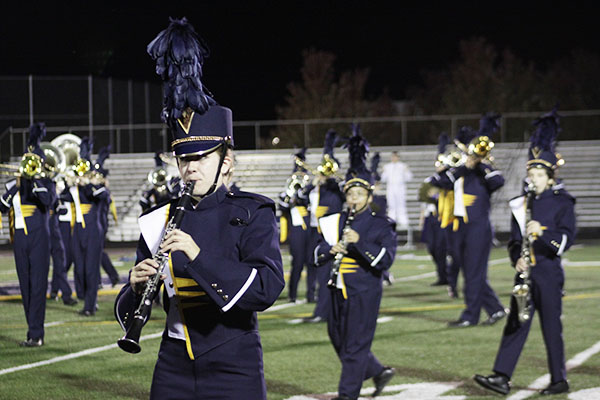What are Judges looking for?

Although there are, by no means, consistency and agreement in contest adjudication, there are common areas of evaluation that provide criteria for judges in their quest to rank and rate competing bands.
There are two types of band classification systems currently in use in both field and parade competitions. By far the most popular system (wind instruments and percussion). The problem is that there is no real consistency between various contests. Class AA is often the largest class (over 96 horns and percussion); however, in some contest this class could be called AAA or 6A. The other type of classification system involves the utilization of school enrollments (according to I.H.S.A. guidelines). Most universities use this system. thus we would be in Class 7a (school enrollment of over 1600 students). This system is not our preference in that it displays no regard for the size of each band.
In many field contests, there are nine judges involved in the evaluation of the competing bands. Of these, four judge the musical performance and four judges the marching performance. The remaining judge keeps track of timing and/or penalty infractions that may occur. There, generally, four categories or criteria that are being judged:
Music Execution – technical accuracy of musical performance – how well the wind and percussion performers play together and the difficulty level of the music being performed.
Music General Effect – how musically the performers play, how effective their performance is relative to the other bands, and how well the whole is ‘put together’.
Marching Execution – usually judged from the field level to determine the marching accuracy of both individuals and the group-carriage, poise, consistency of style, exposure to error, difficulty level, errors and break.
Marching General Effect – usually judged from the press box to determine how well the drill interprets the music, how well all of the visual aspects of the show are coordinated, including color guard, how well the band sells the show to both audience and the judges,and the degree of esprit de corps within the band.
All these scores are then combined (some are added; other are averaged), and any penalties are deducted to determine each band final score and placement within each class. All of the judges record their scores on special adjudication sheets while many of the judges also speak into portable tape recorders to record comments and suggestions.
In competition, the most important things is not that we come in first, but that we discover the best in each of us, that we find in ourselves the ability to accomplish beyond that which is easy, to press ourselves to new levels of achievement. If we do that, score and placement for the group will take care of themselves.
